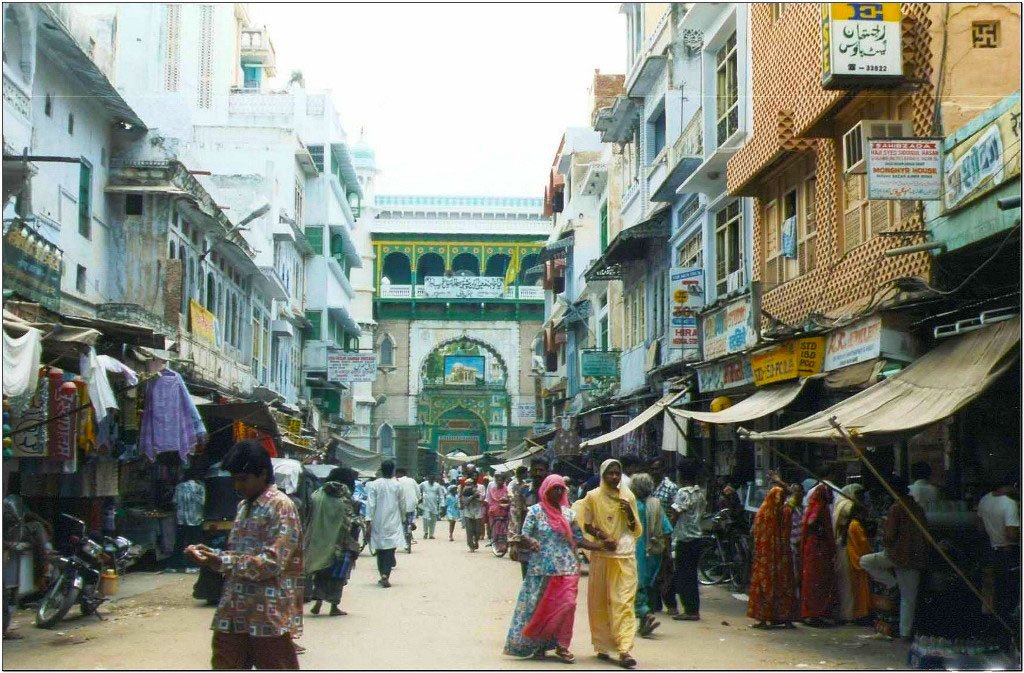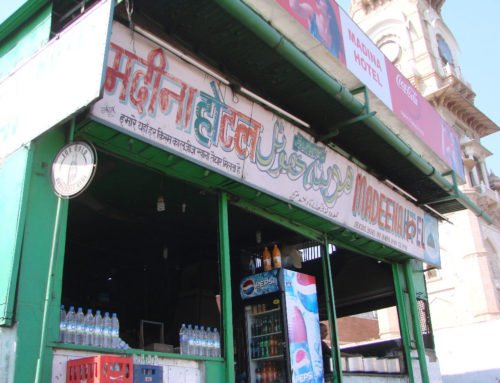Overview
- Main Attractions: Dargah Sharif, Arhai-din-ka-Jhonpra mosque
- Best Time to Visit: Late October to early March
- Local Specialty: Sohan halwa, a type of Indian mithai or sweet
- Travelled By: Train, bus, auto rickshaw
- Cost: $
- Duration of Stay: Half a day
- Location: Rajasthan, India
Author Reviews[display_rating_item_results rating_form_id=”4″ rating_entry_ids=”1″ show_category_filter=”false” show_options=”true” result_type=”star_rating” preserve_max_rating=”true” show_title=”false” show_count=”false” ]
Total Rating: [display_rating_result rating_form_id=”4″ show_count=”false” show_rich_snippets=true] [accordions load=”1″] [accordion title=”User Reviews” last] [display_rating_item_results rating_form_id=”5″ show_options=”true” result_type=”star_rating” preserve_max_rating=”true” show_title=”false” show_count=”true” show_rich_snippets=true] [/accordion] [accordion title=”Add Review”][display_rating_form show_email_input=”true” show_comment_textarea=”true” show_name_input=”true” rating_form_id=”5″] [/accordion] [/accordions]
Summary
Ajmer is a great pit stop on the way to Pushkar, as it provides a contrast between the cultures, religions and traditions of the two towns. While the landmark of Ajmer is the Dargah Sharif, which is the resting place of the Sufi saint, Moinuddin Crishti, the town has a lot more to offer the intrepid traveler.
Ajmer: Our Experience
Ajmer is located only 15 kilometres south-east of Pushkar, and yet these two towns couldn’t be more different. Between the two towns, there is a strong contrast of cultures, religions and institutions, seen in the array of temples and mosques that stand within a short distance of each other. The harmonious blend of Hinduism and Islam give these towns a unique and contrasting character.
We passed through Ajmer several times on our way to and from Pushkar. Ajmer is the closest train station to Pushkar, and moreover, has an interesting cultural background founded on the Islamic beliefs of its forefathers.
November 7th, 2013 (First Visit)
On our first day in Pushkar, we took a bus to Ajmer in the afternoon, to get a different perspective on the religious and cultural traditions in Rajasthan. The bus left from the old bus station in Pushkar and took approx 30 minutes. The bus was old and not well maintained, however, it was only Rs 10 each, so we didn’t complain.
We were sitting at the front of the bus, near the bus driver, and we had the shock of our lives when the windscreen shattered while we were on the road. Graham was sitting right next to it when it shattered, and he was more shocked than injured. The most interesting part was when the bus conductor removed the glass, and the bus proceeded to drive to Ajmer without a windscreen!
When we got to Ajmer, our first stop was the Dargah Sharif, located west of the Ajmer railway station.
[singlepic id=4401 w=720 h=560 float=center]
The landmark of Ajmer, Dargah Ajmer Sharif, is regarded as one of the holiest Muslim shrines in India. Thousands of pilgrims come here to pay homage at the shrine or Dargah, which is the final resting place of the great Sufi saint, Khwaja Moinuddin Chishti, who claimed descent from the son-in-law of prophet Mohammad. Seven pilgrimages to Ajmer are believed to equal one to Mecca. Every year, especially at the annual Islamic festivals of Id and Muharram, thousands of pilgrims converge on this ancient town on the banks of the Ana Sagar Lake.
[singlepic id=4391 w=720 h=560 float=center]
After our visit to the Dargah, we took a walking trip around Ajmer town to check out the sights and sounds of the back streets.
In one of the back streets behind the Dargah, we found a couple of non-vegetarian restaurants selling tandoori chicken and kebabs. It was such a pleasant sight, as Pushkar is strictly vegetarian and we are strongly non-vegetarian. Even though it had been a day since arriving in Pushkar, the sight of the tandoori chicken on the skewers was inspiring. Mughlai food is my favourite Indian cuisine, and I was on the look out for a nice Mughlai restaurant to have lunch while in Ajmer.
[singlepic id=4393 w=720 h=560 float=center]
Taking photos is an interesting pastime, as the response one gets from people is varied and unexpected.
While I was taking a photo of the tandoori bread sitting in front of the restaurant above, I had an old woman scream at me. While I thought she was screaming at me for taking a photo of her, I realised a few minutes later that she was actually peeved I was taking a photo of the bread instead of her.
[singlepic id=4394 w=720 h=560 float=center]
Another interesting find in the back streets of Ajmer was sweet shops selling a specialty of Ajmer – sohan halwa. It is a famous Persian sweet, which made its way across to Ajmer with the invasion of the Mughals. It is round and thick like a disc, and made of flour, milk, sugar, ghee (clarified butter) and nuts. It is brittle and caramel in color. It has a very unique flavour, which is hard to describe. As you crunch on it, the flavours of sugar, ghee and nuts get infused together leaving a delicious syrup in your mouth.
After having a taste of this delicious sweet, we bought a couple of sohan halwa discs to take with us to Pushkar, which costs us about Rs 50.
[singlepic id=4400 w=720 h=560 float=center]
Walking along the streets of Ajmer, we saw numerous shops selling everything under the sun, from clothes and homeware to hardware and spare parts.
One of the shops that caught our attention was the fruit shop on the road. A temporary shack set up for the day, the fruit shop had a huge selection of fruits, some of them I had not seen before. The fruits in India are juicy, sweet and full of flavour, as they are organic and very fresh.
[singlepic id=4395 w=720 h=560 float=center]
The British left their legacy in the form of educational institutions and architectural buildings in Ajmer. A couple of these buildings stand in the heart of Ajmer. One of them, located opposite the railway station, is an imposing clock tower; the other is the railway station opposite the street.
The Victoria Jubilee clock tower, built in 1887, is particularly striking for its architectural beauty. It is an impressive example of British architecture, and reminds me of a smaller version of the Big Ben.
[singlepic id=4390 w=720 h=560 float=center]
The Ajmer railway station stands in the heart of Ajmer town. It is an important landmark, as it connects Pushkar to many other Rajasthan cities. The architecture of the railway station is also interesting, as it looks like it was developed during the British rule in India, and has several elements from Victorian architecture.
November 8th, 2013 (Second Visit)
[singlepic id=4402 w=720 h=560 float=center]
The following day, we headed to Ajmer train station from Pushkar on our way to Jodhpur. We arrived in Ajmer a few hours before our train departure, so we could have lunch at one of the popular Ajmer restaurants, Madina Hotel, which is located opposite the railway station.
Madina Hotel is a restaurant that specialises in Mughlai cuisine. This underrated restaurant serves one of the best Mughlai chicken dishes in India, and we loved it so much we returned a few days later to have lunch here again.
While we made several trips to Ajmer, they were short and brief. Nevertheless, we got to see the contrast between Ajmer and Pushkar, which was very different to our expectations. While Pushkar is largely a tourist and Hindu pilgrimage town, Ajmer is a thriving township with markets geared for everyday living.
Many visitors are discouraged by the frantic hustle of Ajmer on first arrival, but it’s worth taking time to explore this underrated city. We think Ajmer to be a particularly interesting town, and it is worth a visit on a trip to Pushkar.




